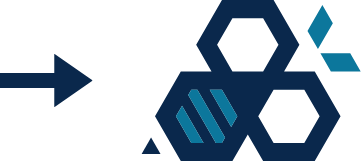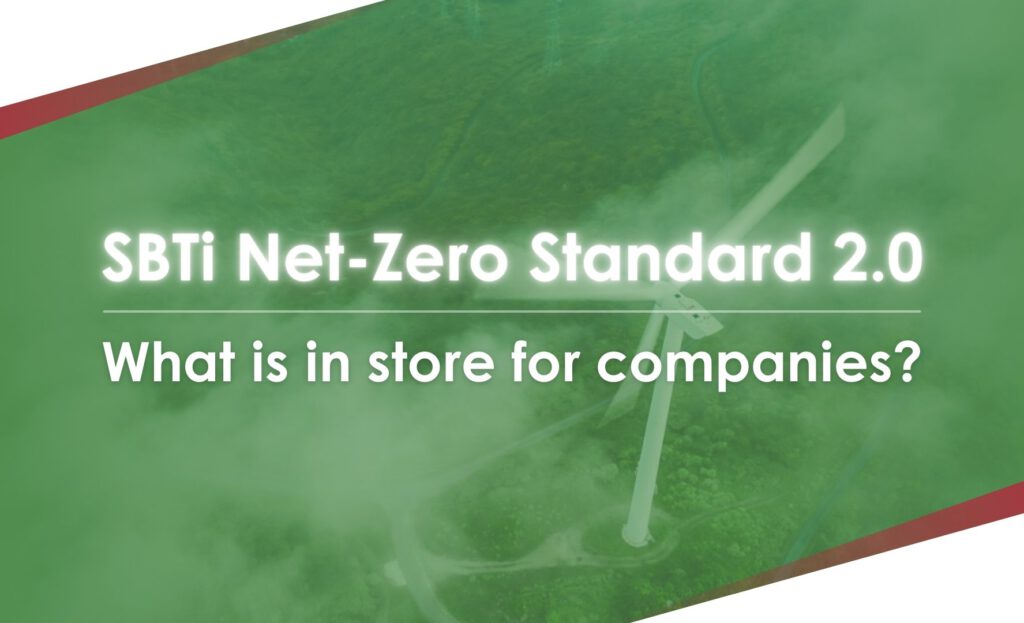The Science Based Targets initiative (SBTi) published its revised Net-Zero standard (version 2.0) in March 2025. This will become binding from 2027 – and will replace the previous version 1.2, which may still be used until the end of 2026. The new requirements go much further: they not only make climate targets more ambitious, but also more binding, plannable and verifiable.
Why is the target now more demanding?
Version 2.0 requires more topicality and selectivity:
- In future, the selected base year may only be three years in the past – targets with a reference year such as 2015 are now a thing of the past.
- Companies must report Scope 1 and 2 separately instead of together.
- Scope 3 is also being reassessed: instead of rigid coverage rates, the focus is shifting more towards the relevance and influenceability of individual categories.
The SBTi will allow more flexibility in future – for example with budget approaches that allow for temporary deviations. At the same time, the expectation of methodological certainty and transparency is increasing.
Does every objective now also have to have a plan?
Yes – and that is one of the biggest changes. From 2027, companies must submit a concrete transition plan no later than 12 months after target validation. This must be made public and meet requirements such as those of the UN High-Level Expert Group Standard (HLEG).
Targets without reliable implementation are therefore no longer accepted – climate strategy becomes a management task with a reporting obligation.
What does this mean for testing and credibility?
Large companies – the so-called Category A companies – must have their GHG balance sheet audited externally. This applies in particular to the base year.
In addition, progress will be assessed in future using a standard algorithm. Companies that fail to meet their targets will have to take active corrective action – so failure to meet targets will not be without consequences.
What role will carbon removals and the electricity mix play in the future?
Companies must plan carbon removals, i.e. measures to remove CO₂, at an early stage. These are no longer only relevant at the time of net zero, but also for interim targets.
The approach to Scope 2 emissions is also changing: instead of market- or location-based, both perspectives must be taken into account in future. For many, this means that the electricity strategy needs to be fundamentally redesigned.
Removals vs. offsets – what’s the difference?
| Carbon Removals | Compensation (offsets) | |
| Goal | Actively remove CO₂ from the atmosphere | Offset CO₂ emissions elsewhere |
| Example | Reforestation, direct air capture, soil binding | Financing of climate protection projects (e.g. solar) |
| Recognition by SBTi | Mandatory component for Net Zero strategy | Only voluntary, no substitute for reduction or removals |
| Time of effect | CO₂ is extracted in a real and measurable way | CO₂ emissions are indirectly prevented or offset |
| Long-term nature | Must be permanent (e.g. through storage solutions) | Often temporary, no guarantee of long-term effect |
Conclusion: Offsets ≠ Removals. SBTi 2.0 is about real removals, not offsetting entries.
How is communication about climate targets changing?
Transparency is becoming mandatory: companies must make their targets, responsibilities, progress and update cycles public – in line with international frameworks. The frequency of progress communication will also be regulated.
There is additional relief in Scope 3: in future, non-material categories will only have to be recalculated every three years – this creates space for the essentials.
What does this mean for companies in concrete terms?
The time for non-binding climate targets is over. SBTi Net-Zero Version 2.0 makes it clear: companies must set up their climate strategies in a resilient manner – with up-to-date data, internal anchoring and external verification. Those who prepare now will not only ensure regulatory compliance, but also credibility and competitiveness.

Curious about all the changes at a glance?
We have compared the differences between versions 1.2 and 2.0 in a compact table. Ideal for teams, decision-makers and project planners.
📞 Would you like to future-proof your climate strategy? Then talk to us – we’ll guide you through the new requirements.
SBTi Net-Zero – What will change with version 2.0 (from 2027)
| Area | So far (Version 1.2) | New from 2027 (version 2.0) | What does that mean in concrete terms? |
| Transition Plan | Not mandatory | Mandatory within 12 months of target validation; public & near-standard (HLEG) | Companies need a structured implementation plan early on – no more goals without a plan |
| Base year | Freely selectable, back to 2015 possible | Base year must not be more than 3 years in the past | No more fair calculation with old reference years – current data situation becomes mandatory |
| External examination | No mandatory audit | Category A companies: External audit (“Limited Assurance”) of the base year | More mandatory checks = higher data quality & internal preparation required |
| Scope 1+2 Target | Common goal permissible | Separate targets for Scope 1 and 2 mandatory | More transparency & selectivity required in target setting |
| Scope 3 Target coverage | 67 % (short-term) / 90 % (long-term) | Focus on “most relevant & influenceable categories” – qualitative evaluation | Scope 3 becomes more strategic: focus on supply chain management & impact |
| Target method | Standardized benchmarks, low flexibility | New methods: Budget approach, consideration of historical progress | More flexibility – but also more responsibility in the choice of method |
| Scope 2 electricity mix targets | Market- or location-based permissible | Dual strategy: location-based + market-based/carbon-free required | Electricity strategy must be differentiated and verifiable |
| Carbon removals | Only relevant from the net zero date | Planning already during the transformation, including interim goals | Early strategy for residual issues necessary – including genuine removals |
| Progress measurement | Inconsistent, little standardization | Evaluation by fixed algorithm; obligation to readjust if targets are missed | Progress becomes measurable, comparable & mandatory – no more gray areas |
| Communication & transparency | Independent, little regulated | Offenlegungspflichten zu Zielen, Zuständigkeiten & Fortschritten | Communication becomes formal, regular & part of the strategy |
| Scope 3 calculation | Recalculate as soon as something changes | Reassess non-essential categories only every 3 years | Relief for non-essential data – focus on relevance |







